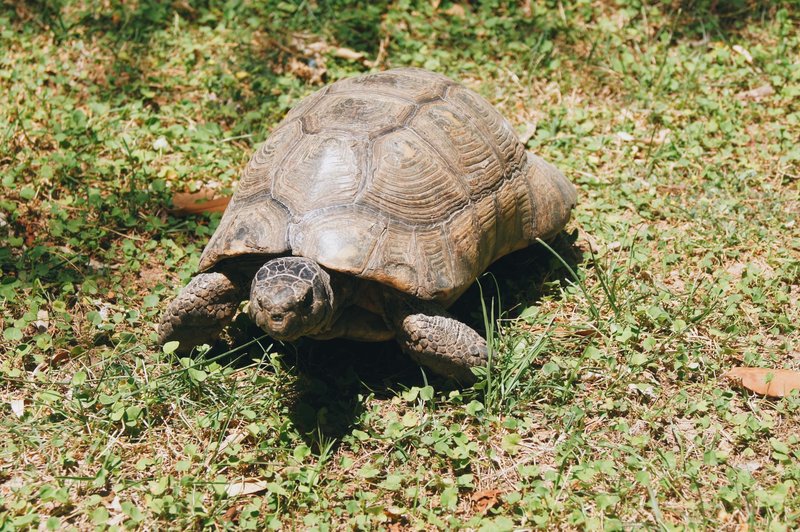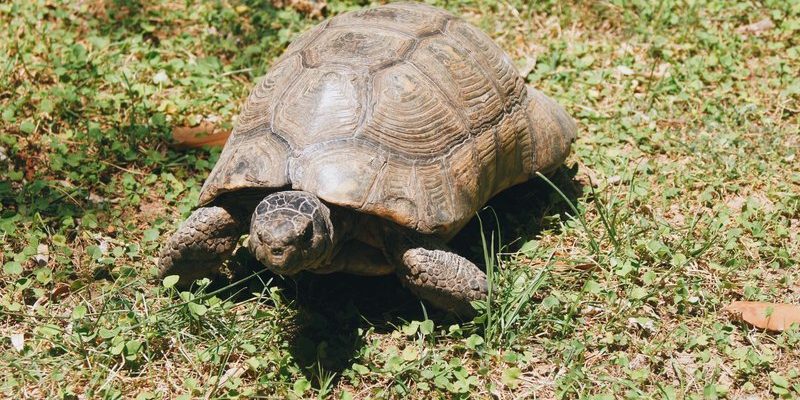
Marginated Tortoises, known for their striking appearance and gentle demeanor, are popular pets among reptile enthusiasts. Originally from the Mediterranean region, particularly Greece, they are accustomed to warm climates. However, that doesn’t mean they can’t adapt to different living situations. By understanding their needs and natural behaviors, we can better determine the most suitable environment for them.
In this guide, we’ll explore the pros and cons of keeping your Marginated Tortoise both indoors and outdoors. We’ll look at factors like space, temperature, diet, and even potential safety concerns. By the end, you’ll have a clearer picture of what lifestyle suits your shelled friend best.
Understanding the Needs of Marginated Tortoises
Before we jump into whether these tortoises should live indoors or outdoors, let’s first talk about their basic needs. Marginated Tortoises are herbivores, which means their diet consists mainly of leafy greens, grasses, and vegetables. They also need a habitat that mimics their natural environment, which includes access to sunlight and hiding spots.
One important thing to remember is that temperature plays a big role in the health of your tortoise. They thrive in temperatures between 75°F to 85°F (24°C to 29°C) during the day and need a warmer basking area. Moreover, they require a cool area to escape the heat. Keeping these factors in mind will greatly influence whether your tortoise is happier indoors or outdoors.
Another critical aspect is hydration. Tortoises need plenty of water, not just for drinking but also for soaking. An outdoor habitat can provide natural sources of moisture, while indoor setups are often more controlled. Both environments can meet this need, but the specifics will depend on how you set them up.
Indoor Living for Marginated Tortoises
Keeping a Marginated Tortoise indoors can be a great option, especially if you live in a region with harsh winters or limited outdoor space. Here’s the thing: an indoor environment allows you to control the temperature, humidity, and lighting more easily.
To create a suitable indoor habitat, consider using a large tortoise enclosure or a dedicated room. You’ll want to include different areas: a basking spot with a heat lamp, a cooler area for your tortoise to retreat, and plenty of hiding spots. UVB lighting is crucial for tortoises living indoors, as it helps them synthesize vitamin D3 for healthy shell and bone development.
However, there are some challenges to indoor living. Many tortoises may not get enough natural light, and this can lead to health issues over time. Plus, you’ll need to clean the enclosure regularly to prevent a build-up of waste and bacteria. So, if you’re planning to keep your tortoise indoors, be prepared for a bit of maintenance!
Outdoor Living for Marginated Tortoises
Now, let’s chat about the outdoor option. An outdoor environment can offer your Marginated Tortoise a more natural lifestyle. Imagine your tortoise roaming around a garden filled with fresh grass, dandelions, and clover. It’s like a buffet of tasty treats!
Outdoor living allows your tortoise to get the natural sunlight they crave for healthy growth, along with plenty of space to explore. However, creating a safe outdoor habitat is crucial. You’ll need a secure enclosure to protect against predators, as well as a shaded area where they can retreat from the heat.
Moreover, outdoor conditions can vary widely, especially during winter. If you experience cold weather, you’ll need to find a way to bring your tortoise indoors or provide a heated shelter. This way, you’ll ensure their comfort and safety throughout the seasons.
Comparing Indoor and Outdoor Living Conditions
Let’s break it down a bit more. Here’s a comparison of the key factors to consider when choosing between indoor and outdoor living for your Marginated Tortoise:
| Factor | Indoor Living | Outdoor Living |
|---|---|---|
| Temperature Control | Easy to manage | Varies with weather |
| Sunlight Exposure | Requires UVB lighting | Natural sunlight |
| Space | Limited by enclosure size | Ample room to roam |
| Maintenance | Regular cleaning needed | Monitoring for safety |
As you can see, both options have their pros and cons. You might be wondering, how do you decide? It often comes down to your local climate, your living space, and how much time you’re willing to invest in your tortoise’s care.
Dietary Considerations for Indoor and Outdoor Tortoises
Diet is another important component that varies between indoor and outdoor living conditions. An outdoor Marginated Tortoise has access to a variety of natural plants and grasses, which can be healthier options than what is typically offered in pet stores. However, it’s essential to ensure that the outdoor space is free from pesticides and harmful plants.
For indoor tortoises, you’ll need to provide a diverse and balanced diet. Fresh greens like kale, romaine, and dandelion leaves should be staples. You can also supplement their diet with commercial tortoise pellets, but make sure they’re high-quality and specifically made for Marginated Tortoises.
Whichever environment you choose, keeping an eye on their diet is crucial. A varied diet helps prevent nutritional deficiencies, keeping your tortoise healthy and happy.
Safety Concerns and Considerations
Safety comes into play for both indoor and outdoor living. Indoors, you’ll need to ensure that the living area is free from hazards like electrical cords and chemicals. Tortoises are curious creatures and can get themselves into trouble if precautions aren’t taken.
Outdoors, the main concern is predation. Birds of prey, dogs, and even raccoons can pose threats to your tortoise. It’s vital to have a sturdy enclosure to keep them safe while allowing them the freedom to explore their surroundings.
Also, consider the weather. Extreme temperatures can be harmful, whether it’s scorching heat or freezing cold. If you decide on outdoor living, make sure you have a plan to bring your tortoise indoors during unfavorable conditions.
Finding the Right Balance for Your Tortoise
Ultimately, the best living situation for your Marginated Tortoise depends on several factors, including your lifestyle and local climate. You might even find that a combination works best—perhaps letting your tortoise enjoy some outdoor time in warmer months while bringing them inside during the colder seasons.
Creating a healthy environment is key, regardless of where your tortoise lives. Be attentive to their needs, provide ample food and water, and ensure they have space to move and explore.
In closing, whether you choose to keep your Marginated Tortoise indoors or outdoors, the most important thing is to prioritize their health, safety, and happiness. As you navigate this journey, remember: it’s all about finding what works best for you and your shelled companion. Happy tortoise-keeping!

